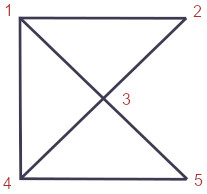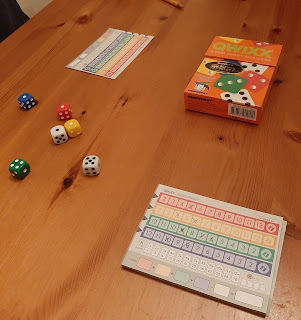The Smallest Board Games

After my last post about the oldest known board game artifact, it might be fun to describe the smallest board games in history. You might think of Tic-Tac-Toe right away, but that has nine whole spaces to play on. The smallest I could find was a Chinese games called Pong Hau K'i, which has only these five spaces: Player one starts with pieces on 1 and 4, player two puts their pieces on 2 and 5, and the winner is the one who can blockade their opponent. It is just a minor exercise, and a game should either end quickly or go on forever. Over at Cyningstan , this game is also called Horseshoe. A similar game from Korea, called Umul Gonu uses the same board (though in a more circular shape) but Player A starts on 1 and 2, player B on 4 and 5, and the obvious one-move win of 2-3 is forbidden. From here we can move on to a 7-space board: For a game called Madelinette, player A starts on 1, 3 and 6; player B starts on 2, 5 and 7, and it is another blockade game. T...






